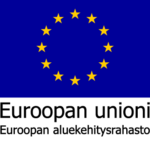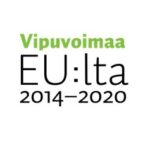
As the technologies related to the Internet have developed, digital ecosystems have become increasingly viable and some of the largest companies in the world are now based on them. At the same time, these same ecosystems also present opportunities for smaller companies.
Authors: Eren Aktürk and Aki Vainio
A business can work on digitalization as an independent unit, but it is often easier and more lucrative to cooperate with other companies. Digital ecosystems can enable cooperation for a company in various ways if the company understands how this should affect its strategy. DigiUP is a project funded by European Regional Development Fund and The Regional Council of Päijät-Häme and implemented in cooperation by Lab University of Applied Sciences and LUT University in order to help the businesses in the Päijät-Häme area integrate digitalization into their strategy.
The complexity of the modern world and the fast-moving development of technology has led to unpredictability in the markets. The potential of emerging technologies, such as artificial intelligence, is immense and will influence customer expectations. (Atluri et al. 2018, 3).
Porter’s Five Forces describe competitive pressures, which are new providers, substitute products, the bargaining power of both customers and suppliers, and competition (Ammon et al. 2013, 94). A potential way of counteracting these forces is the construction of digital ecosystems. This involves expanding a company’s range of services via digital interfaces by adapting internal structures or by collaborating with partners.
One of the main advantages of these ecosystems is the ability to compete in different business sectors at the same time (Atluri et al. 2018, 5). However, it is inevitable that this will also increase the complexity of the corporate structure.
Digital Ecosystems
In the context of digital transformation, consumers expect completely personalized solutions for their individual problems. One of the reasons why large corporations like Apple, Amazon or Google are successful is their ability to build, manage and expand a digital ecosystem. These companies initially focused on a single product, but in order to prevent customer churn they were forced to offer additional products either through internal product development or integrating other companies to their value chain.
For example, an online trading platform could work with a payment service provider to integrate payment processing into the customer’s buying process saving the customers both time and effort. The online trading platform could also collaborate with an insurance service provider in order to offer insurance for their products creating added value for the customer. Most successful digital ecosystems consist of more than 40 partners and thus operate in at least 10 different countries. (Jacobides et al. 2019, 3). Before such alliances can come into fruition, a company should first identify the target customers and the associated source of added value.
The best way to identify target customers is to analyze personal data. The storage and use of this data require structures to translate it into real actions (Atluri et al. 2018, 15). A critical goal for many companies is a variety of data, which enables finer micro-segmentation of customers (Atluri et al. 2018, 15). A variety of partners enables such diversity of data.
When choosing a partner, it is important not only to consider the satisfaction of current customers as a goal, but also to consider access to new customers as a criterion (Atluri et al. 2018, 5). For the example above, this could mean working with a shipping company that is the market leader in regions that have so far been less profitable. The competitive situation of the potential partner should also be considered in order to avoid entering a flooded market. Finally, the structures and the values practiced within the partner company should be compatible with those of the core company.
Since working with numerous partners creates additional administrative work, this type of organization is not suitable for every company. It can be more lucrative to use digital ecosystems from a different perspective by building a business model as a complementary one. For example, a payment service provider that is particularly convenient for customers can join forces with several online platforms and thus enter several ecosystems at the same time without having to manage a large variety of partners and business processes.
With an increasing number of digital ecosystems, the boundaries between the individual business sectors are becoming blurred and it is often not enough to concentrate on just one industry or service, as there is a risk of being displaced by another ecosystem. To remain competitive, a company must remain flexible and agile in order to be able to continuously integrate new services and thus generate higher added value for the customer. A company should be able to quickly ally itself with partners to modify the customer experience, but also quickly disconnect from them if necessary. (Aulkemeier et al. 2019, 605)
Opportunities, risks and outlook
Digital ecosystems offer an excellent opportunity to address larger target groups (Marchesi 2020, 114). Through cooperation, a company can increase the number of income streams and secure itself for the future.
The ideal is to handle all customer activities through your own business. In this way, more precise buyer profiles can be created, and other possible company partners can be identified. The aim of this economy is to develop a profound understanding of the behavior of customers and to build on and expand one’s own ecosystem. Data leads to economic success for companies only with an appropriate infrastructure.
Digital ecosystems already enable a more efficient way of adding value for companies. The more digital ecosystems emerge, the more consumer-oriented the market in which they operate (Atluri, et al. 2018, 6). They enable quick entry into almost any market and generate new points of contact with customers. Large digital ecosystems such as Google or Amazon no longer only dominate their original industry, but also operate in various other markets. The future will likely produce more comparable digital ecosystems, as it is currently the only option to remain competitive for many companies.
References
Ammon, T. & Brem. A. 2013. Digitale Ökosysteme und deren Geschäftsmodelle: Analyse und Implikationen für klassische Buchverlage. In: Keuper, F., Hamidian, K., Verwaayen, E., Kalinowski, T., Kraijo, C. (eds.). Digitalisierung und Innovation: Planung – Entstehung – Entwicklungsperspektiven. Wiesbaden: Springer Gabler. 91-121.
Atluri, V., Dietz, M., Henke, N.. 2018. Competing in a world of sectors without borders. Ed: Rosenfield, J. Digital/McKinsey:: Insights Winning in digital ecosystems , 4-17. [Cited 22 Nov 2020]. Available at: https://www.mckinsey.com/~/media/McKinsey/Business%20Functions/McKinsey%20Digital/Our%20Insights/Digital%20McKinsey%20Insights%20Number%203/Digital-McKinsey-Insights-Issue-3-revised.pdf
Aulkemeier, F., Iacob, M.-E &; van Hillegersberg, J.2019. Platform-based collaboration in digital ecosystems. Electronic Markets 29(4), 597-608, 2019. [Cited 22 Nov 2020]. Available at: https://link.springer.com/article/10.1007/s12525-019-00341-2
Jacobides, M. G,, Lang, N., Louw, N. & von Szczepanski, K. 2019. What does a successful digital Ecosystem look like?. Boston Consulting Group. [Cited 22 Nov 2020]. Available at: https://www.bcg.com/publications/2019/what-does-successful-digital-ecosystem-look-like
Marchesi, C. 2020. Daten als Treiber der digitalen Transformation. In: Gatziu Grivas, S. 2020. Digital Business Development: Die Auswirkungen der Digitalisierung auf Geschäftsmodelle und Märkte. Berlin, Heidelberg: Springer Gabler. 111-130.
Authors
Eren Aktürk is an exchange student from Frankfurt University of Applied Sciences studying at Lab University of Applied Sciences.
Aki Vainio is a senior lecturer of Information Technology and acts as an expert on digitalization in various projects at Lab University of Applied Sciences.
Illustration: https://pxhere.com/en/photo/1449809 (CC0)
Published 9.12.2020
Reference to this article
Aktürk, E. & Vainio, A. Digital Ecosystems as Part of a Strategy. 2020. LAB Pro. [Cited and date of citation]. Available at: https://www.labopen.fi/lab-pro/digital-ecosystems-as-part-of-a-strategy/









